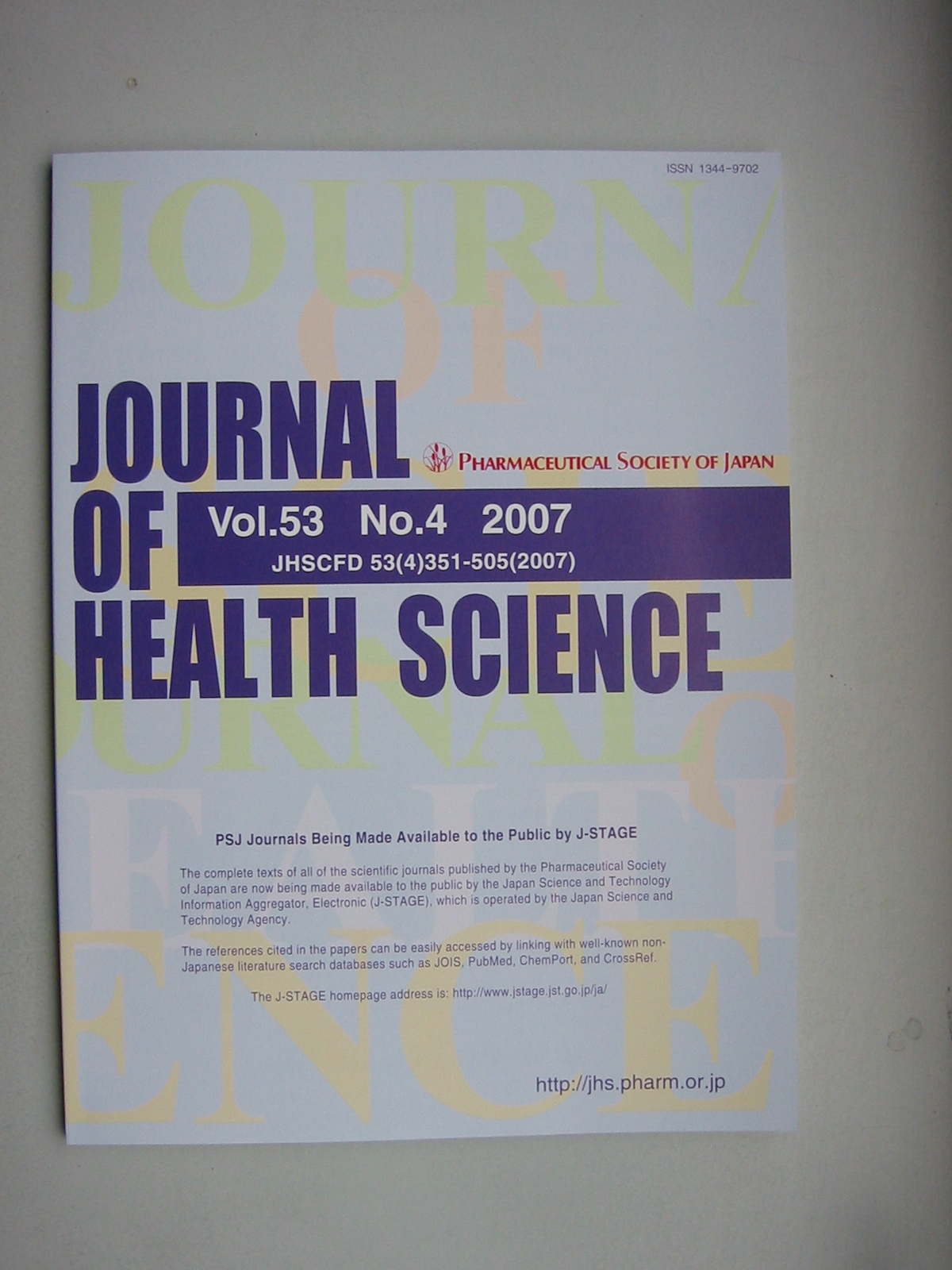Volume 51, Issue 3
Displaying 1-22 of 22 articles from this issue
- |<
- <
- 1
- >
- >|
REVIEW
-
2005 Volume 51 Issue 3 Pages 263-271
Published: 2005
Released on J-STAGE: June 01, 2005
Download PDF (360K)
MINIREVIEW
-
2005 Volume 51 Issue 3 Pages 272-277
Published: 2005
Released on J-STAGE: June 01, 2005
Download PDF (224K)
REGULAR ARTICLES
-
2005 Volume 51 Issue 3 Pages 278-283
Published: 2005
Released on J-STAGE: June 01, 2005
Download PDF (160K) -
2005 Volume 51 Issue 3 Pages 284-290
Published: 2005
Released on J-STAGE: June 01, 2005
Download PDF (485K) -
2005 Volume 51 Issue 3 Pages 291-293
Published: 2005
Released on J-STAGE: June 01, 2005
Download PDF (45K) -
2005 Volume 51 Issue 3 Pages 294-299
Published: 2005
Released on J-STAGE: June 01, 2005
Download PDF (245K) -
2005 Volume 51 Issue 3 Pages 300-307
Published: 2005
Released on J-STAGE: June 01, 2005
Download PDF (849K) -
2005 Volume 51 Issue 3 Pages 308-316
Published: 2005
Released on J-STAGE: June 01, 2005
Download PDF (287K) -
2005 Volume 51 Issue 3 Pages 317-324
Published: 2005
Released on J-STAGE: June 01, 2005
Download PDF (310K) -
2005 Volume 51 Issue 3 Pages 325-332
Published: 2005
Released on J-STAGE: June 01, 2005
Download PDF (139K) -
2005 Volume 51 Issue 3 Pages 333-340
Published: 2005
Released on J-STAGE: June 01, 2005
Download PDF (615K)
RESEARCH LETTERS
-
2005 Volume 51 Issue 3 Pages 341-345
Published: 2005
Released on J-STAGE: June 01, 2005
Download PDF (510K) -
2005 Volume 51 Issue 3 Pages 346-356
Published: 2005
Released on J-STAGE: June 01, 2005
Download PDF (98K) -
2005 Volume 51 Issue 3 Pages 357-361
Published: 2005
Released on J-STAGE: June 01, 2005
Download PDF (277K) -
2005 Volume 51 Issue 3 Pages 362-364
Published: 2005
Released on J-STAGE: June 01, 2005
Download PDF (69K) -
2005 Volume 51 Issue 3 Pages 365-368
Published: 2005
Released on J-STAGE: June 01, 2005
Download PDF (227K) -
2005 Volume 51 Issue 3 Pages 369-375
Published: 2005
Released on J-STAGE: June 01, 2005
Download PDF (226K) -
2005 Volume 51 Issue 3 Pages 376-378
Published: 2005
Released on J-STAGE: June 01, 2005
Download PDF (88K)
RAPID COMMUNICATIONS
-
2005 Volume 51 Issue 3 Pages 379-384
Published: 2005
Released on J-STAGE: June 01, 2005
Download PDF (73K) -
2005 Volume 51 Issue 3 Pages 385-393
Published: 2005
Released on J-STAGE: June 01, 2005
Download PDF (117K) -
2005 Volume 51 Issue 3 Pages 394-397
Published: 2005
Released on J-STAGE: June 01, 2005
Download PDF (55K) -
2005 Volume 51 Issue 3 Pages 398-404
Published: 2005
Released on J-STAGE: June 01, 2005
Download PDF (155K)
- |<
- <
- 1
- >
- >|
